This is the third post in a series of tests of the Fujifilm 32-64 mm f/4 lens on the Fuji GFX 50S. The test starts here.
In order to test on-axis longitudinal chromatic aberration (LoCA), I use computer controlled focusing rail and a razor blade target.
A quick review of the test protocol:
- Fuji GFX 50S
- ISO 100
- Manual exposure
- Wescott LED panels set to 5500 K.
- EFCS shutter mode
- Manual focus, set at one position in the center of the rail for f/4
- Cognisys computer-driven focusing rail
- 101 exposures 1.6 mm apart
- Target distance at the center of the rail, 1.6 m
- RAF mosaiced files converted to DNG in Adobe DNG Converter
- DNGs extracted as TIFFs in dcraw (document mode)
- TIFFs cropped and raw channels selected in Matlab program
- MTF50 of cropped TIFFs measured with MTF Mapper
- Data assembled in Matlab
- Data plotted in Excel
Here are the results wide open at 64 mm:
The vertical axis is MTF50, measured in cycles per picture height (cy/ph). The horizontal axis is camera position shift in cm. The points on the left side of the graph are with the camera farther away from the subject than the points on the right.
There is essentially zero LoCA: the peaks are at the same distance for all three channels. However, the unnatural (if you’re new to this presentation of LoCA, trust me; it is unusual) flatness of the top of the curve indicates that lens aberrations are limiting sharpness considerably at f/4 and this subject distance.
You can see that at 64mm, the red channel is the sharpest, followed by the green, then the blue. You can also see a little bit of LoCA: the peaks of all three channels don’t occur at the same distance. By the width of the peaks, you can see the depth of field (DOF) at this distance is nearly sufficient to mask all the LoCA.
At 44mm:
Now the red channel is the weakest, but not by much. The LoCA is still fairly low.
At 32 mm:
At 32 mm, there is a lot of LoCA. If the blue channel is in focus at 3000 cy/ph, the red channel can only resolve half that. If the red channel is in focus at 2600 or 2700 cy.ph, the blue channel can only resolve half that.
64 mm at f/5.6:
This is amazing! There is no LoCA at all.
44mm at f/5.6:
Essentially no LoCA as well. How about 32 mm:
There’s quite a bit of LoCA, but there’s also quite a bit of DOF, so the lens should be OK here.
Now we’ll look at f/8:
No problem.
Also excellent.
Enough DOF to cover up the LoCA.
F/11 is as far down as I went:
All those are fine. With the exception of 32 mm at f/4 and f/5.6, this is an outstanding LoCA performance for any lens, let alone a zoom.
With a complex lens design like this, the performance could vary at other distances. Unfortunately, I can’t test distances well away from the ones I used here.
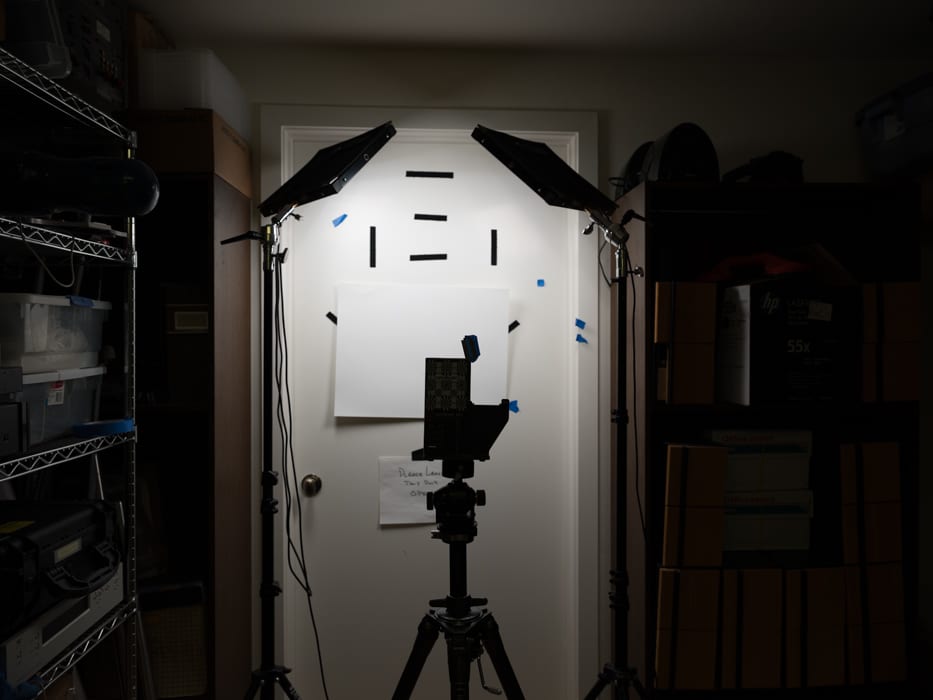
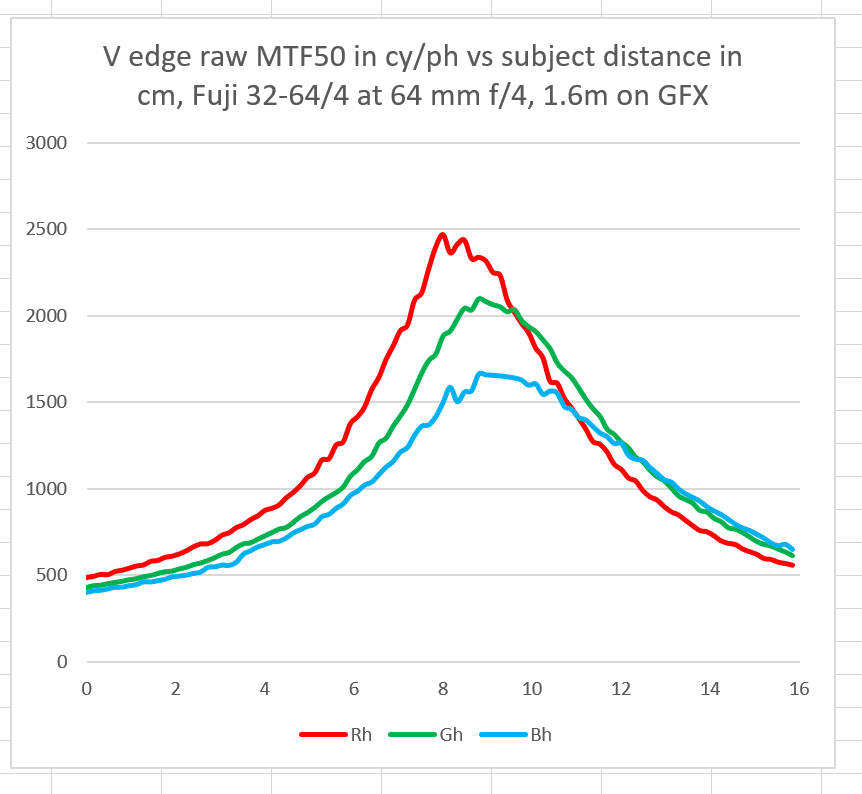
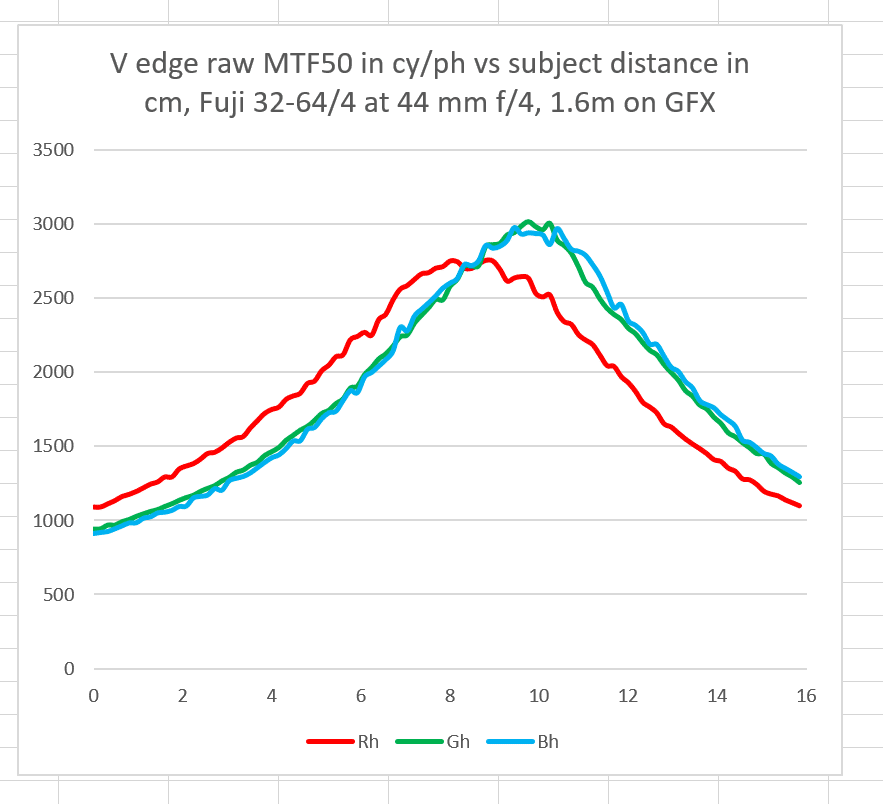


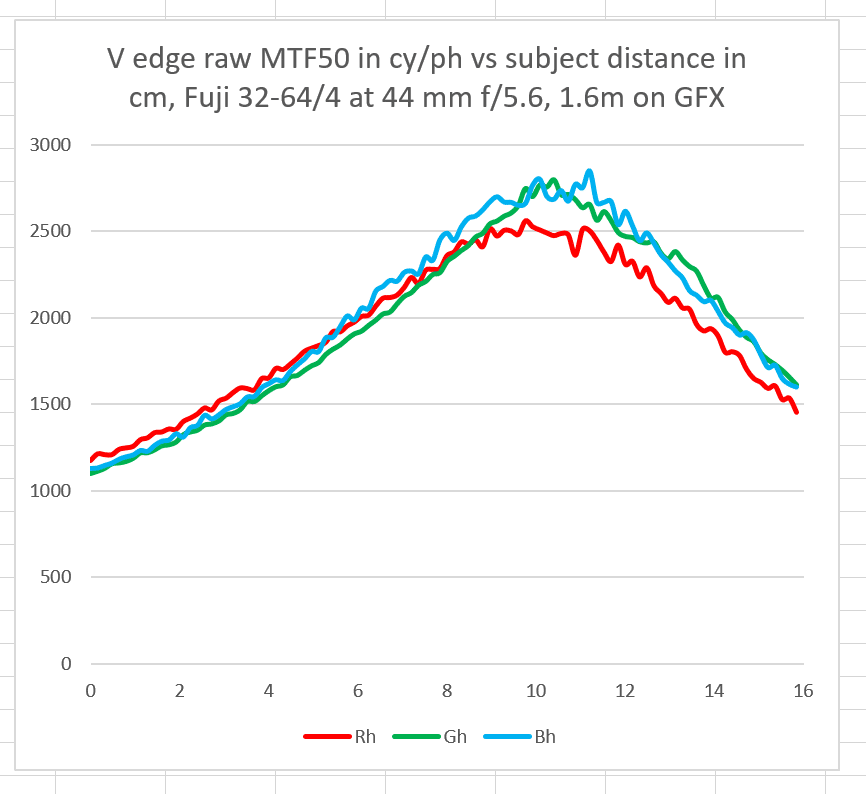
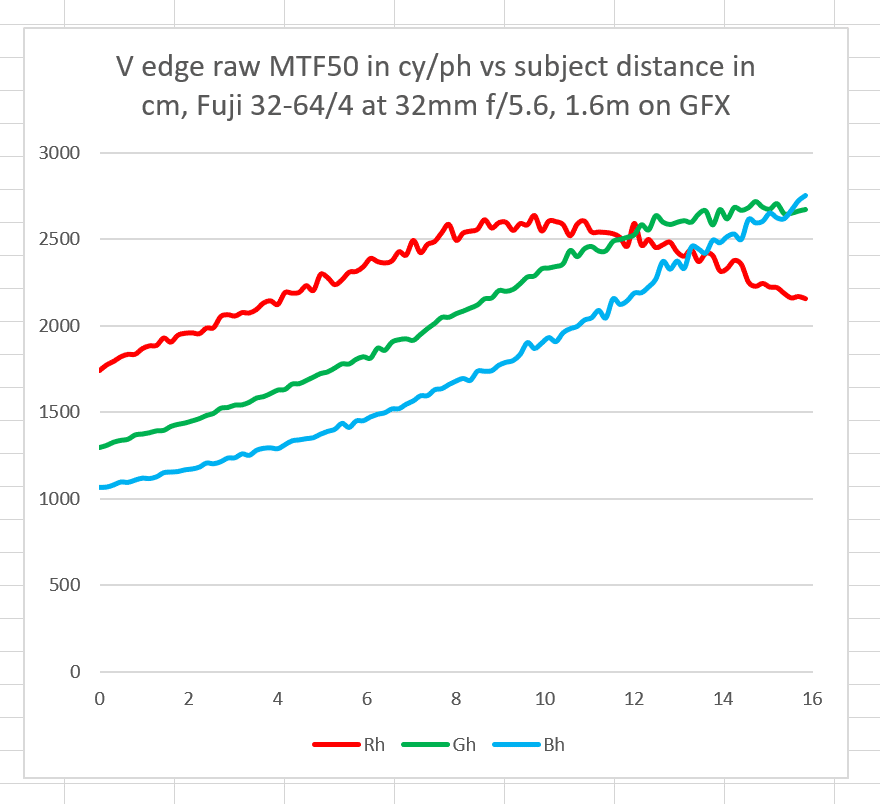
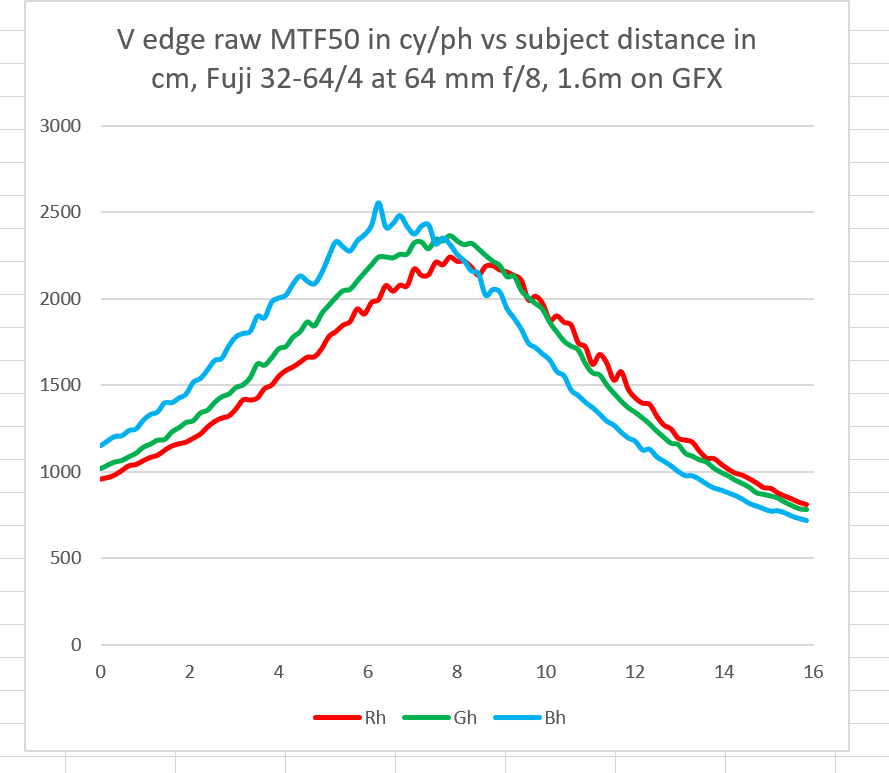
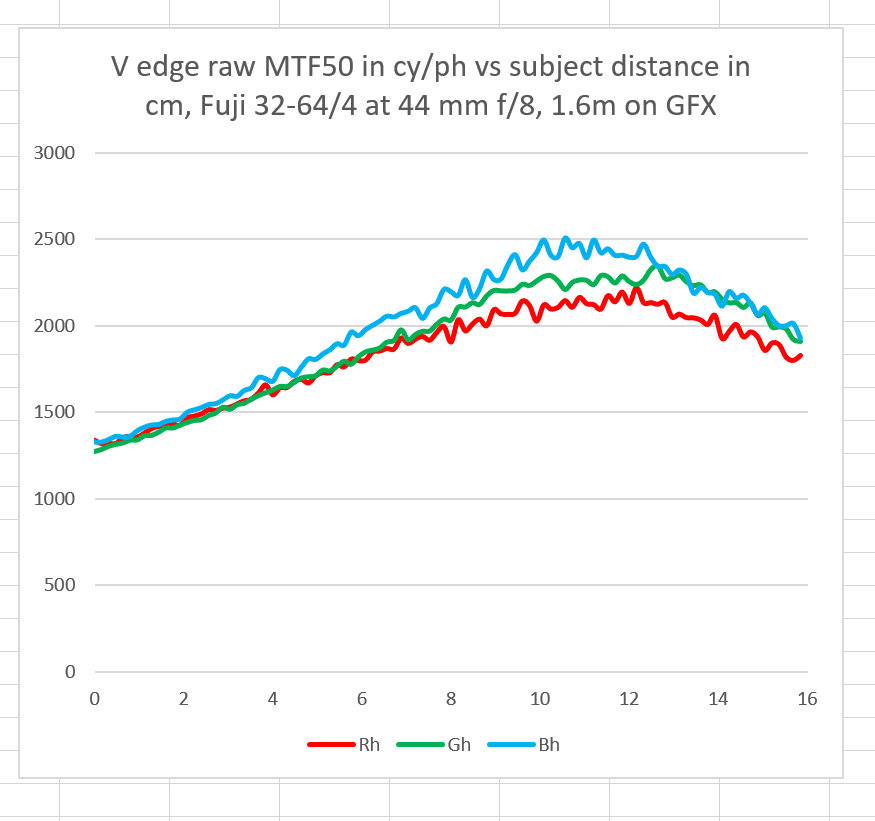


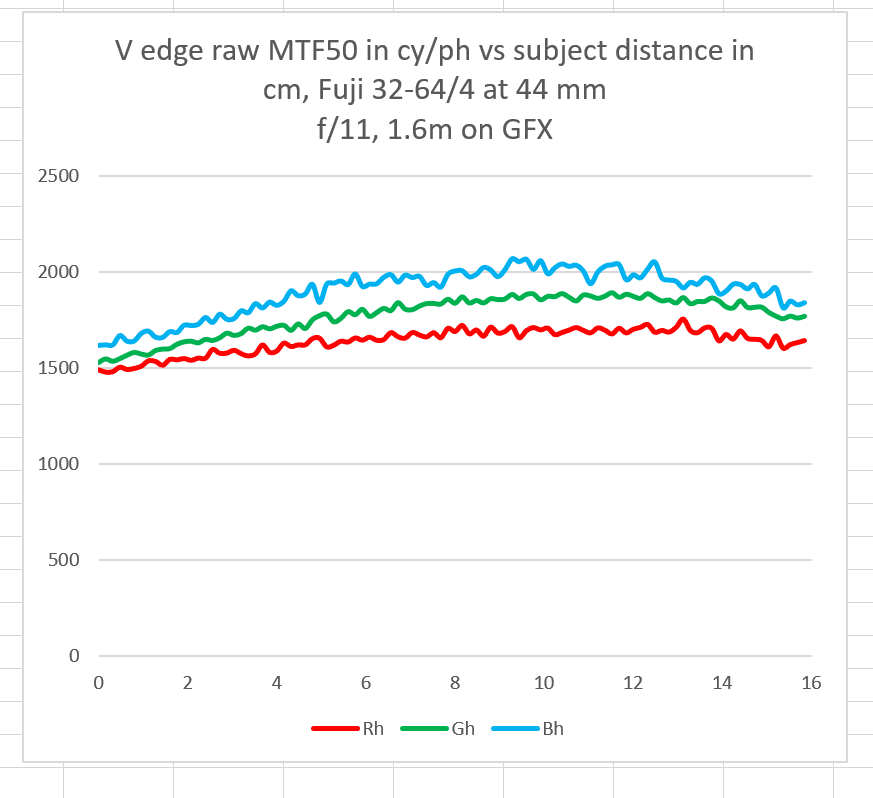

That’s outstanding work Jim, especially given the number of captures involved.
Thanks, Jack. Since Frans upgraded MTF Mapper to deal better with OOF images, it’s actually been pretty painless. Still, 1200 captures is a lot.
Jim